|
Helicopters (Huey) in Vietnam
|
The first Hueys to operate in Vietnam were medevac HU-1As that arrived in April 1962, before the United States became officially involved in the conflict. These Hueys supported the South Vietnamese Army, but American crews flew them. In October, the first armed Hueys, equipped with 2.75-inch rockets and .30 caliber machine guns, began flying in Vietnam. The main role of these Huey 'gunships' was to escort Army and Marine transport helicopters. By the end of 1964, the Army was flying more than 300 'A and 'B model Hueys. During the next decade, the Huey was upgraded and modified based on lessons learned in combat: Bell introduced the UH-1D and UH-1H variants. It was in Vietnam that Army and Marine soldiers first tested the new tactics of airmobile warfare. In a typical air assault mission, Huey helicopters inserted infantry deep in enemy territory while Huey gunships, equipped with machine guns, rockets, and grenade launchers, often escorted the transports. Within minutes, helicopters could insert entire battalions into the heart of enemy territory - this was airmobility.
The Huey became a symbol of U.S. combat forces in Vietnam and millions of people worldwide watched it fly in TV news reports. At its peak in March 1970, the U.S. military operated more than 3,900 helicopters in the war in Vietnam and two thirds of them were Hueys.
Their impact was profound, not only in the new tactics and strategies of airmobile operations, but on the survival rate of battlefield casualties. U.S. Army patients made up 390,000 of the total number of people transported by medevac helicopters in Southeast Asia. Almost a third of this total (120,000) were combat casualties. The Huey airlifted ninety percent of these casualties directly to medical facilities.
From the very beginnings and over the next decade Camp Holloway became the center of operations and headquarters to numerous Army aviation, maintenance, security, and support units which were involved in some of
|
The Sikorsky S-58 was first developed as an anti submarine helicopter for the US Navy in the 50s as the HSS-1 Sea Bat ( with the US Department of Defense normalization of 1962 received the SH-34 core designation ) and like all other good helicopters was soon adapted to several missions. The US Army also operated them as CH-34 and HH-34 Choctaw for cargo and rescue missions and the variant of the US Marines were known as the HUS-1 ( later UH-34 ) Sea Horse.
|
On April 15, 1962 Operation Shufly was initiated when the HMM-362 ( US Marines Medium Helicopter Squadron 362 ) landed at a Japanese fighter strip 3 miles from Soc Trang, southwest of Saigon, in the Mekong Delta in the Republic of South Viet Nam. This was four months after the first american helicopters arrived.
Operation Shufly was set up as a multi-squadron rotation exercise. The plan was for a squadron to be deployed on a four-month rotation with four months in Okinawa ( Japan ), four months aboard ship, and four months in Viet Nam. Only the personnel were transferred: they received what equipment was already at the base.
The Sea Horse primary role was personnel and cargo transport. The aircraft were "slick" meaning that they had no weapons but by August 1962, M-60 machine guns were mounted inside the aircraft. Two machine guns were utilized: one for the crew chief, mounted at the main door and one mounted in the rear window on the opposite side for use of the gunner. Very often the pilot and co-pilot carried an AR15, which was the forerunner of today 's M16 rifle, next to their seat in the cockpit which allowed them to provide fire support if they were not on the controls.
The US Army, with a small unit deployed in Da Nang, had Bell UH-1B ( at that time HU-1B ) aircraft configured as gunships and would serve as escorts when there own commitments allowed. UH-1B aircraft for Marine use was still in the future; the UH-1E specialized Marines version of the Huey arrived in 1966.
The army UH-1B was a little underpowered for the role they were playing and must be remembered, was also an experiment for the US Army . The extra weight of several boxes of ammunition and the extra crew members to maintain a constant flow of ammunition and manning extra M-60 machine guns caused the UH-1B to be slow and with limited range. This was because of the need to cut back on the amount of fuel carried to allow for the extra weight. A strike of any distance would require a refueling stop for the UH-1B along the route while the UH-34 circled.
|
All these reasons, along with the limited amount of aircraft the army had, resulted in the Marine Corps Development Center at Quantico experimenting with some method of providing the Marine Corps a means of escorting themselves.
The method decided on was to arm the UH-34.
UH-34s' were modified by mounting two fixed, forward firing M-60 machine guns attached to the landing gear on the right side and two 2.75" FFAR ( Folding Fin Aerial Rocket ) pods attached between the landing gear struts on each side of the aircraft. Both rear windows now had an M-60 machine gun installed and one in the door for the crew chief. The rockets' sighting system was very primitive but useable. It consisted of a grease pencil mark on the windshield and a cross hair welded inside a circle mounted to the instrument panel and windshield with nuts and bolts. The system required the cross hair in the circle be lined up with the grease pencil and the target. What it lacked in sophistication, it made up in reliability.
Pilots that flew them began to hit targets consistently, after a little practice.
The armed H-34s, called Stingers had only four aircraft modified. They were all assigned to HMM-365 commanded by Lt.Col. Joseph Koler and was the only Marine helicopter unit to utilize a piston powered helicopter as a gunship.
Many problems plagued the conversion and perhaps the mounting design was the major of them. With the rigid mounts, neither the machine guns nor the rockets could be aimed without the entire helicopter being pointed in the direction of the target. This made for some pretty unusual flying altitudes trying to line up the cross-hair with the dot by pointing the aircraft....and by the way...while, usually, presenting a pretty big bulls-eye for the target.
The UH-34 was a relatively large, slow aircraft and the target usually got some pretty good shots at the gunship. All these factors contributed to an unusually number of Stingers damaged by ground fire. The US Army solved this problem in later versions of the UH-1B by mounting their armament on swivels that could be aimed in a direction other than the one the aircraft was pointed.
In spite of all the limitations, the US Marines used the Stingers effectively and extensively but the days of piston powered aircraft were numbered and the decision was made to discontinue the experiment. Turbine powered aircraft was the future of helicopter warfare.
As soon as the US Army got some more armed UH-1Bs to Da Nang to support the marines increased flight operations, the Stingers were striped of their forward firing armament returning to a transport configuration and became but a footnote in history
|
Apocalypse Now - Helicopter Attack- Kilgore
Click Here
|
Armed helicopters came into widespread use in Vietnam in the early Sixties. Limitations of the modified armed utility helicopters used led to the specially configured attack helicopter.
Bell Helicopter (now Bell Helicopter Textron) had already evolved the first attack helicopter design, based on the use of UH-1 Huey dynamics (rotors, drives, engine) with a new fuselage. Bell also built a company-sponsored, scaled-down prototype using H-13/Model 47 series components, its Model 207 Sioux Scout
While the US Army went forward with its sophisticated AAFSS (advanced aerial fire support system) program ( See Lockheed AH-56 Cheyenne ) to provide an attack helicopter, Bell proceeded with another company-sponsored prototype, Model 209, using the Huey dynamics and an airframe similar to the initial design.
The 209 first flew in September 1965. The urgent need for greater armed helicopter performance in Vietnam and the success of the 209 led to US Army orders for prototypes and production models of the 209 as interim attack helicopters, pending production of the AAFSS (which, finally, was never to occur).
Carried over from the 209 were the slim fuselage with tandem cockpits (gunner in front of pilot), the Lycoming T-53 engine, stub wings with store stations and the under nose turret. Its retractable skid landing gear was replaced by a fixed gear. As the AH-1G, the Huey Cobra went into combat in September 1967.
The US Marines also operated armed Hueys in Vietnam, and ordered their own version of the Cobra in May 1968. Featuring the Pratt and Whitney Twinpac T400 engine (two 900-hp turboshaft engines coupled together) giving an overall increase in installed power, the AH-1J Sea Cobra included a new nose turret gun, the three barrel XM-197 20mm and other improvements.
With increasing demands for higher performance, particularly greater load-carrying capability in high temperature conditions, Bell developed improved dynamic components for the Huey series. Application of these components, which included a larger diameter rotor, led to the 309 attack helo in the early Seventies. This allowed an increased payload, providing more combat capability. The subsequent Marine-ordered version of the King Cobra ( with some work based on the Bell 409 , which was Bell s proposal for the AAH competition won by the Hughes AH-64 Apache ) was designated the AH-1T. In addition to the modifications for improved combat effectiveness, major efforts were made to incorporate the lessons of the Cobra experience in achieving greater reliability and maintainability. With the TOW missile system added to its weapons, the AH-1T gave a ground attack capability far beyond that first envisioned by their predecessors
An upgrade to the AT-1T, the AH-1W was received in 1986. The AH-1W Super Cobra provides full night-fighting capability with the Night Targeting System (NTS). The Super Cobra is armed with a 20mm turret gun, TOW, Hellfire, Sidewinder, Sidearm missiles, and 5 inch or 2.75 inch rockets.
|
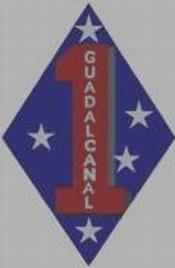 |
| 1st Marine Division Website. |
|
|
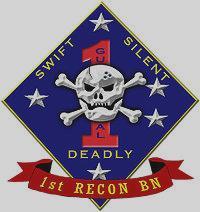 |
| 1st Reconnaissance Battalion Website |
|
|
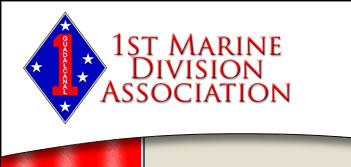 |
| Click for Website |
|
|
1st Reconnaissance Battalion Association Website
Click Here
|
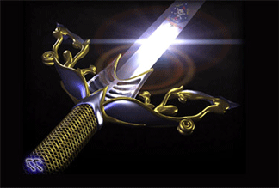 |
| Click for Index page |
|
|
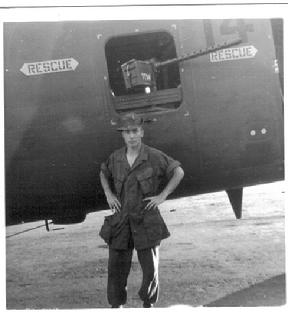 |
| Thanks for Stopping By |
|
|
 |
| Click for Home page 1st Recon Bn.com |
|
|
Categories within this 1st Reconnaissance Battalion website.
1st Recon Bn.com Home page, My Missions in Nam (Coming soon), Photos of 1st Recon Battalion in Nam, Recon Missions the units Patrol Reports 1968-1969 (coming soon), A Summer Day in Nam - My Story (Coming soon), Recon 1 The War, Recon 2 Tet Offensive in Nam 1968, Tet Offensive in Nam 1969 (Coming soon), Recon 3 Vietnam War Timeline, Recon 4 President Richard M. Nixon's Report on Vietnam, Recon 5 1950's US send troops to Vietnam, Recon 6 The French Foreign Legion in Vietnam, Recon 7 Hill 200 my story with photos (Coming soon), Recon 8 - Maps & Artifacts - The Time Capsule (Coming soon), Recon 9 1st Recon Battalion Units photos, Recon 10 Sounds from Nam (Coming soon), Recon 11 Reunion Photos, Recon 12 Helicopters in Nam, Recon 13 1st Recon Bn. Awards & Decorations, Recon 14 Navy & Marine Corps Awards and Decorations, Recon 15 Marine Corps Awards & Decorations, Recon 16 Personal Awards & Decorations, Recon 17 Information on Unit Awards, Recon 18 The Memory Remains Not All Wounds Are Visible, Recon 19 Purple Heart (Coming soon) & Recon 20 Vietnam Footage & Memorials, Vietnam Memorials & Monuments part 2 No Man Left Behind part 1, No Man Left Behind part 2, No Man Left Behind part 3 (Coming soon) ,1st Recon Bn.com Photo Gallery , 1st Recon Bn. Association Messages, 1st Marine Division Association Messages, Battles of the Vietnam War, Hamburger Hill, Vietnam 1968, Vietnam 1969, Vietnam Today, The Day The Eagle Cried, My Message Board.
|
|
|
Index
Categories within 1st Recon Bn
Click the index for the Index page. |
| |
 |
| Email me with your feedback on how I can Improve this website. |
|
|
|